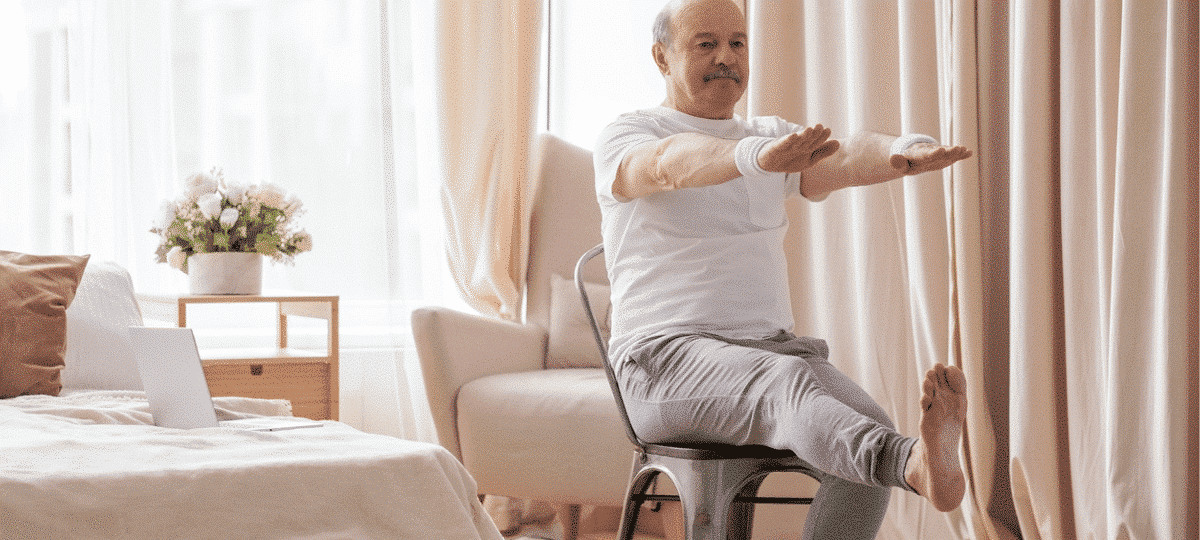Regular exercise plays a crucial role in effectively managing cholesterol levels, a concern that’s especially relevant for seniors and their caregivers. We asked Austin-based exercise scientist and personal trainer Kent Probst to fill us in.
How often should I exercise to lower cholesterol?
“One of the benefits of regular exercise is that it raises the good HDL cholesterol and lowers the bad LDL cholesterol,” Probst notes. “The American College of Sports Medicine recommends 150 minutes per week of moderate-intensity cardiovascular exercise, or 75 minutes per week of vigorous cardiovascular exercise to significantly reduce the risk of disease.”
To determine your maximum heart rate, subtract your age from 220. For example, if you’re 67, your maximum heart rate is 153. Probst says vigorous intensity is 70% to 85% of your maximum heart rate; moderate intensity is 50% to 70%.
How does exercise affect your cholesterol?
This positive impact on cholesterol balance can contribute to a healthier heart and reduced risk of cardiovascular issues. Moreover, exercise supports weight management, which is another critical factor in cholesterol control. Maintaining a healthy weight through physical activity can help lower triglycerides and reduce the overall burden on the heart.
Which exercise is best to reduce cholesterol?
Probst says it’s not the specific exercise that matters as much as how much it gets your heart rate into those target zones.
Moderate Exercises
The CDC says moderate exertion is when your breathing and heart rate are noticeably faster but you can still talk. Some moderately-intense activities include:
- Walking briskly (a 15-minute mile)
- Biking at a casual pace (outside or on a stationary bike)
- Actively playing with others
- Light yard work or housework (raking/bagging leaves, pushing a lawnmower or vacuum cleaner)
Vigorous Exercise
The Centers for Disease Control and Prevention (CDC) defines vigorous intensity as when your heart rate is substantially increased and you’re breathing too hard and fast to have a conversation. Some examples include:
- Jogging, running or hiking (outside or on a treadmill)
- Swimming
- Rollerblading/inline skating at a brisk pace
- Cross-country skiing
- Most competitive sports (football, basketball, or soccer)
- Jumping rope
- Cardio classes like Barre3 or water aerobics
“If you aren’t ready to start at the intensity levels that the American College of Sports Medicine recommends, an alternative is to start walking 20 minutes per day at whatever level is tolerable until it’s possible to reach 50% to 70% of maximum heart rate,” Probst notes. “The walking can be broken up into 10-minute bouts.”
Whether it’s a daily walk, light aerobics, or gentle yoga, incorporating regular exercise into a senior’s routine not only enhances physical fitness but also contributes to better cholesterol profiles, promoting long-term well-being. Consult with a healthcare provider to determine the most suitable exercise plan based on individual health conditions.
Read about how you can use food to manage your cholesterol.
Don’t disregard professional medical advice, or delay seeking it, because of what you read here. This information is not intended as a substitute for professional consultation, diagnosis or treatment; it is provided “as is” without any representations or warranties, express or implied. Always consult a healthcare provider if you have specific questions about any medical matter, and seek professional attention immediately if you think you or someone in your care may be experiencing a healthcare condition or medical emergency.




